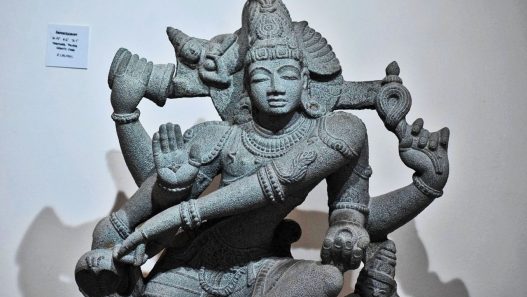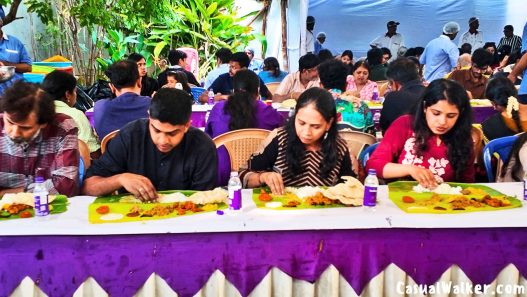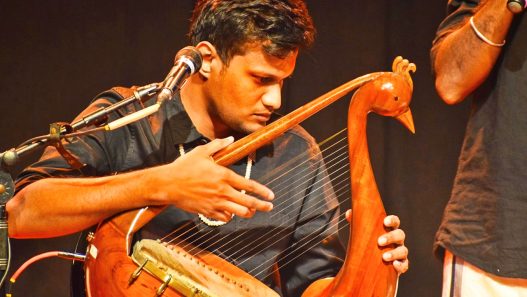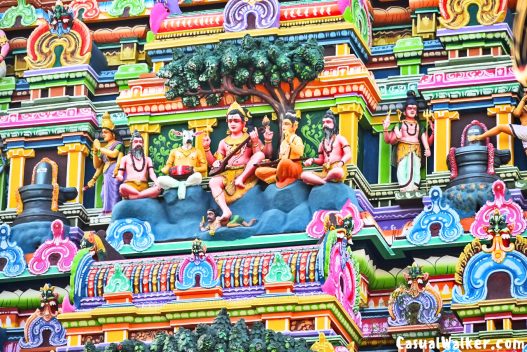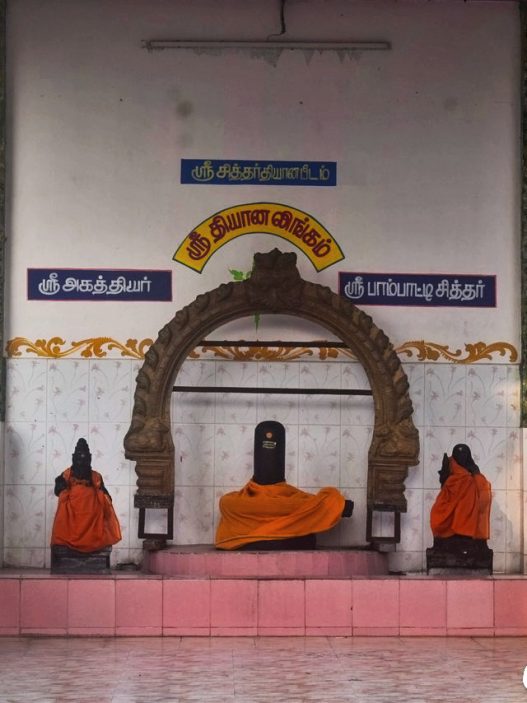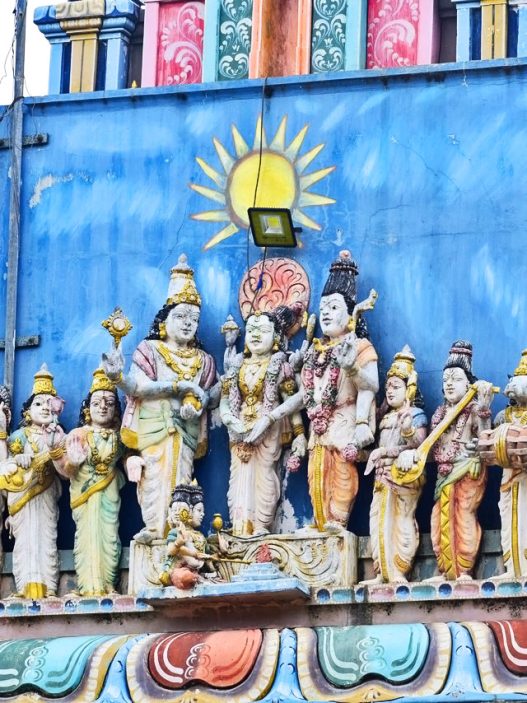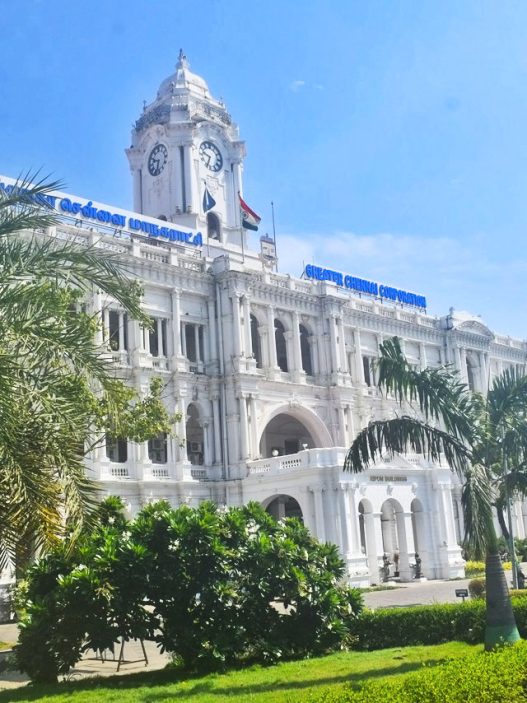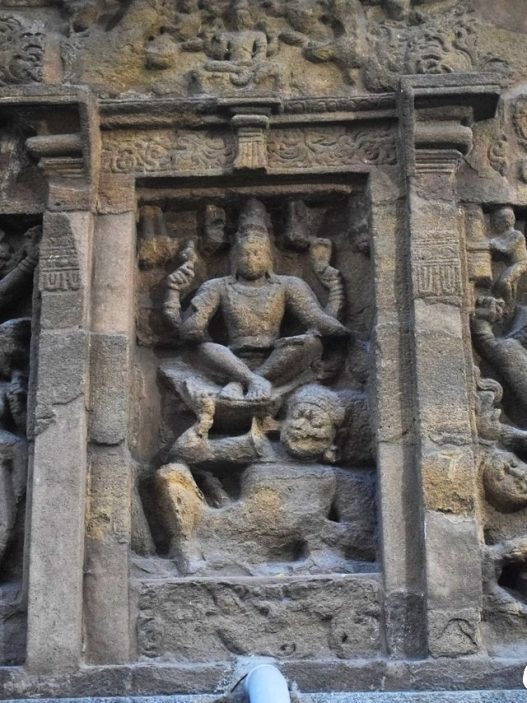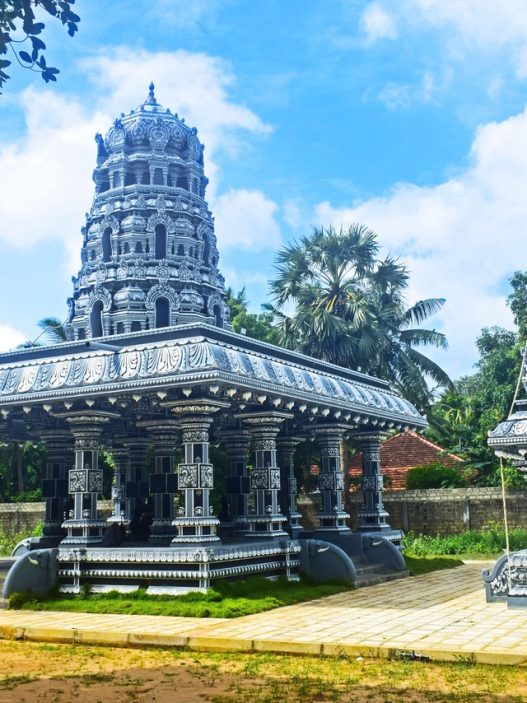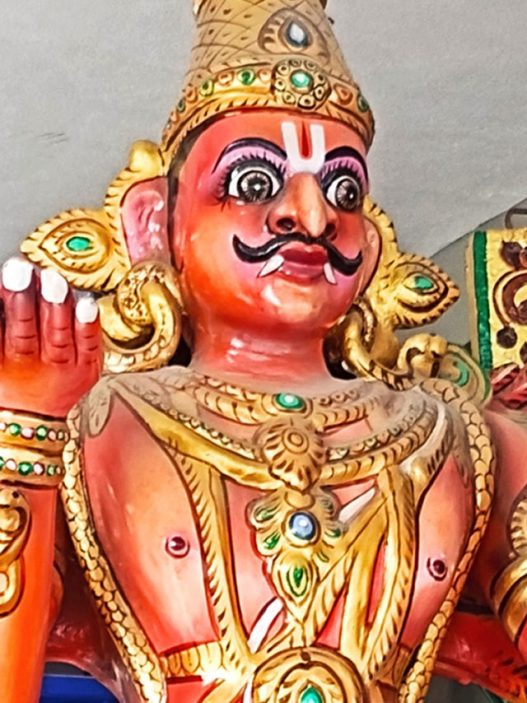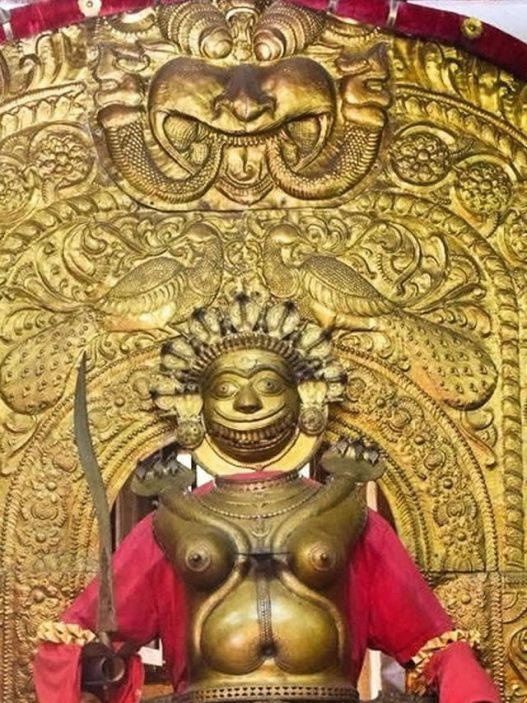Sri Sarabeshwarar Temple / Kampaheswarar Temple in Thirubuvanam, Thanjavur | Parihara Sthalam & Parihara Pujas Specially Offered to Address Negative Energies, Legal Issues, Enemy Obstacles & Rahu Kala Puja Details – Visiting Hours, Temple Timings, History, Location, Contact Details – Complete Visitor Guide (Updated)
– lord shiva’s sarabeshwarar divine form – fusion of man, eagle, & lion
The Kampaheswarar Temple in Thirubuvanam, just 9 kilometers from Kumbakonam is one of the most famous Lord Shiva temple. At the towering five-tiered Rajagopuram caught my attention—not just for its impressive height of 130 feet, but for its unusual width that sets it apart from other Tamil Nadu temples. This temple remains under the caring administration of Dharmapuram Adheenam.
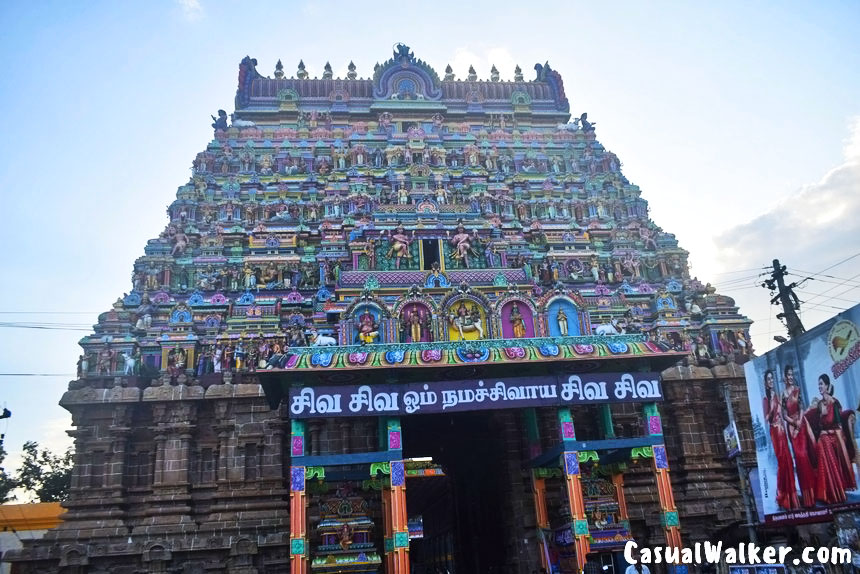
What struck me first was the temple’s unique architectural feature: the Vimana – the tower above the sanctum actually rises higher than the gateway tower—something extraordinarily rare in Dravidian temple architecture.
A Living Temple of Chola Brilliance
Kampaheswarar Temple was built by Kulottunga Chola III between 1176-1218 AD to commemorate his North Indian campaign victory, this temple stands as the final architectural jewel of the Medieval Chola era.
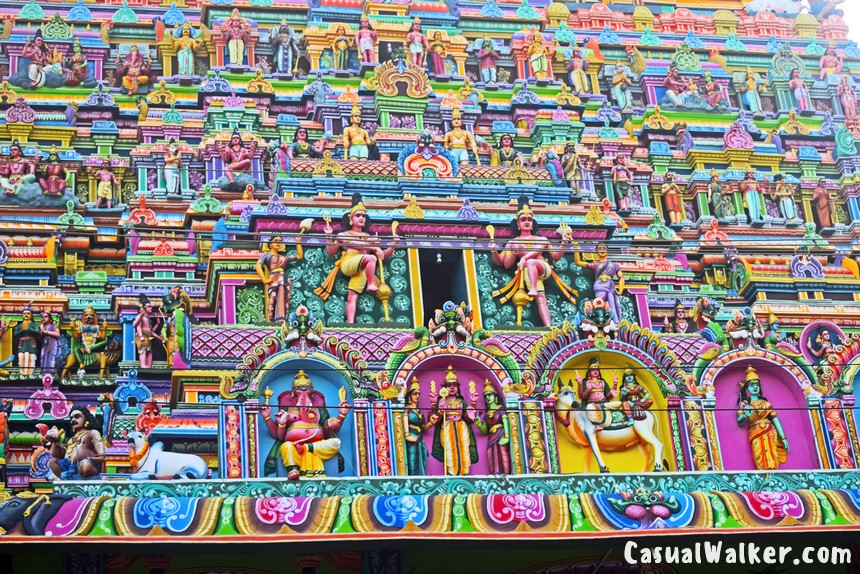
The temple’s facade, designed to resemble a chariot, showcases intricate carvings depicting scenes from the Ramayana. Every pillar, every sculpture seemed to whisper stories of devotion spanning nearly a millennium. The multi-pillared mandapam with its gorgeously painted ceiling created a kaleidoscope of colors above my head as I made my way deeper into the temple complex.
Lord Kampaheswarar – Swayambhu (self-manifested) Shiva Lingam
At the elevated sanctum, I encountered the Swayambhu (self-manifested) Shiva Lingam worshipped as Kampaheswarar, also known as Nadukkam Theertha Nayagan—”The Lord who removes trembling.” The legend behind this name is both fascinating and deeply moving.
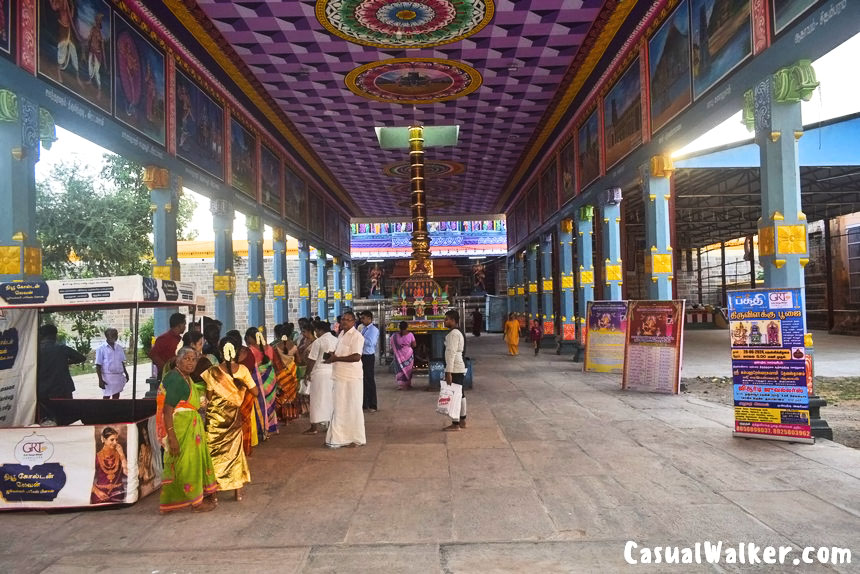
According to ancient texts, a king named Kampa was tormented by a malevolent Brahmarakshasa after accidentally killing a Brahmin. The supernatural being haunted him relentlessly, causing him to tremble with fear. When the desperate king sought Lord Shiva’s help, the compassionate deity manifested as Kampaheswarar and freed him from his torment, hence earning the name “The One who removes trembling.”
History of Thirubuvanam Sarabeshwarar
The Thirubuvanam Sarabeshwarar Temple stands as one of the revered Vaippu Sthalams, immortalized in the devotional hymns of Tamil Saivite saint Nayanar Appar. This ancient temple holds a unique distinction in Hindu temple architecture and worship traditions. The Thirubuvanam Sarabeshwarar Temple stands as one of the revered Vaippu Sthalams, immortalized in the devotional hymns of Tamil Saivite saint Nayanar Appar.
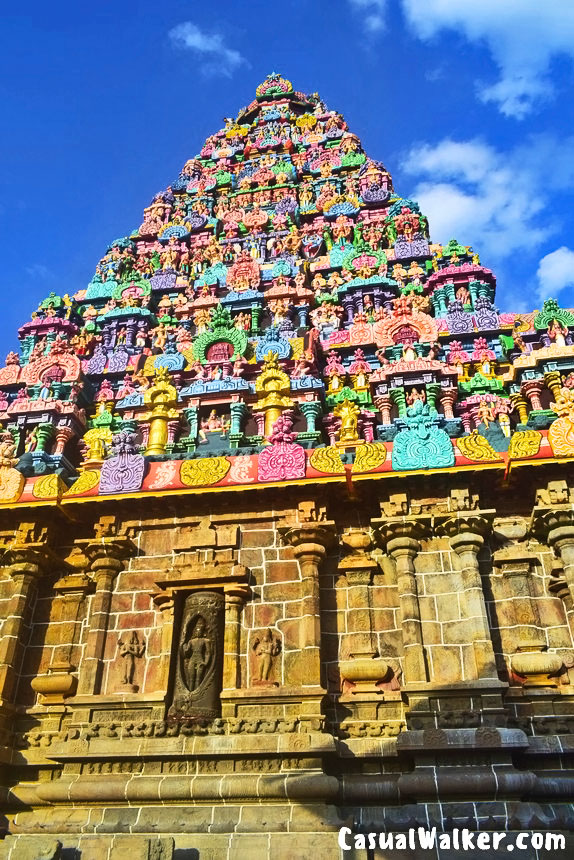
Unique Shrine of Lord Sharabeshwarar
What sets the Thirubuvanam Sarabeshwarar Temple apart is its exclusive shrine dedicated to Sarabeshwarar—a feature found nowhere else among Hindu temples. This singular characteristic makes it an exceptionally significant pilgrimage destination for devotees seeking divine protection from negative forces and life’s obstacles.
Sarabeshwarar Divine Form – fusion of man, eagle, and lion
Sarabeshwarar represents a powerful fusion of man, eagle, and lion. According to Hindu mythology, this divine form emerged to pacify Lord Vishnu’s fierce Narasimha avatar after the destruction of the demon Hiranyakasipu, thereby bringing peace to the celestial deities (devas).
The magnificent Sharbeshwaramurti sculpture depicts:
- Six legs supporting a majestic form
- Lion’s body and face symbolizing divine power
- Four human arms carrying sacred implements:
- Upper right: An axe (representing destruction of evil)
- Lower right: A noose (symbolizing control)
- Upper left: A deer (representing gentleness)
- Lower left: Fire (signifying purification)
- Narasimha beneath shown with eight arms, subdued under Sharbeshwaramurti’s feet
The shrine also houses beautiful sculptures of Sridevi and Bhudevi, the divine consorts of Lord Vishnu. The exquisite bronze image of Sarabeshwarar dates back to the reign of Kulothunga Chola III, adding historical depth to its spiritual significance.
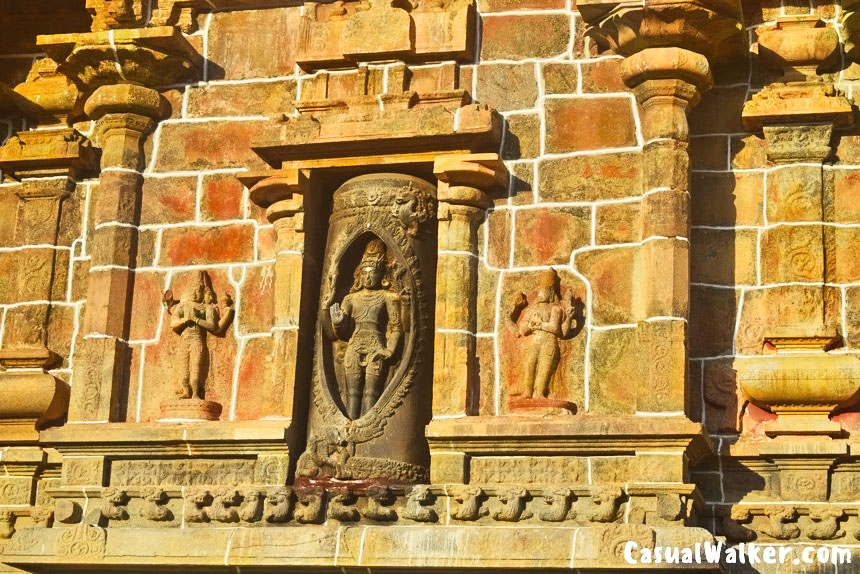
Parihara Pujas: Special remedial prayers offered for:
The temple is renowned for its powerful divine intervention in specific life challenges.
Sarabeswarar Homam : Special & Famous 11-Week Rahu Kala Puja
The temple’s most celebrated ritual occurs every Sunday during Rahu Kalam:
- Timing: 4:30 PM – 6:00 PM every Sunday.
- Duration: 11 consecutive weeks without interruption.
- Significance: This powerful timing attracts thousands of devotees seeking divine intervention.
Legal Matters and Court Cases
- Primary attraction: Temple’s fame for resolving legal disputes.
- Divine belief: Lord Sharabeshwarar grants victory in judicial matters.
- Traditional practice: Devotees undertake prayers for 11 consecutive weeks seeking legal relief.
Fear and Anxiety Relief
- Kampa (trembling) relief: Effective for those suffering from fear, anxiety, and panic disorders.
- Spiritual protection: Shields devotees from black magic and negative energies.
- Mental peace: Helps overcome phobias and psychological disturbances.
Protection from Enemies
- Divine shield: Believers assert that Lord Sharabeshwarar’s devotees remain protected from enemies.
- Negative influence protection: Guards against enemy attacks and harmful influences.
- Strength and victory: Grants inner strength to overcome adversaries.
Health and Healing
- Divine healing: Prayers for recovery from chronic illnesses
- Mental health support: Particularly effective for psychological disorders.
- Children’s wellness: Parents seek health blessings for their children.
Obstacle Removal
- Marriage delays: Removes impediments to matrimonial alliances.
- Career advancement: Eliminates professional and business obstacles.
- Financial relief: Assistance in overcoming debt and monetary troubles.
- Progeny blessings: Childless couples pray for offspring.

Daily Rituals and Ceremonies
Sarabeshwarar Homam: A potent Vedic fire ritual performed daily to:
- Nullify negative influences
- Remove life obstacles
- Counter evil eye effects
- Eliminate black magic influences
Auspicious Days for Worship
- Weekly: Sundays, Fridays, and Saturdays
- Monthly: Eighth day of both full moon and new moon
- Special occasions:
- Karthika star day for Lord Muruga worship
- Chaturthi for Lord Ganesha prayers
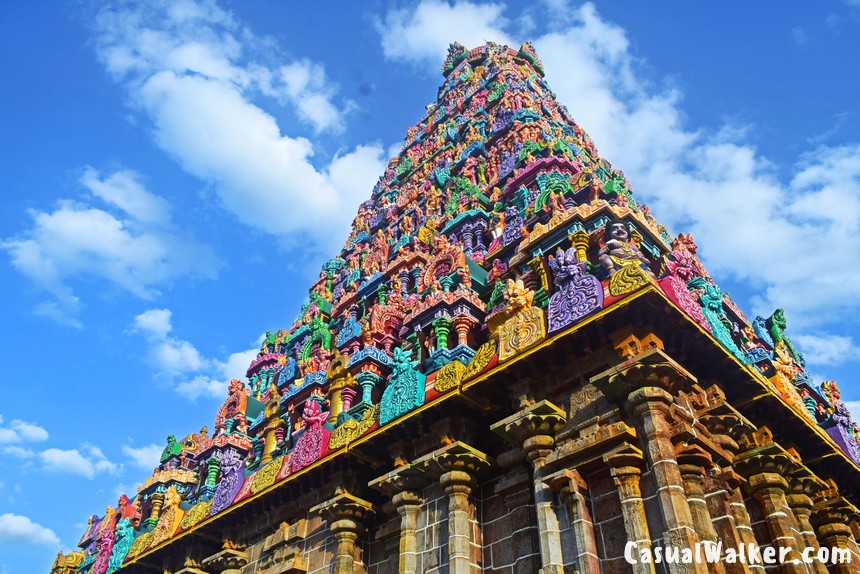
Daily Services and Offerings
Abhishekam and Archana
- Daily prayers: Personalized worship services with devotee names
- Sacred offerings: Milk, honey, and panchamrita (five-nectar mixture) abhishekam
- Blessed prasadam: Sacred vibhuti (ash) distributed to all devotees
Best Time to Visit
Seasonal Recommendations
- Optimal months: October to March for pleasant weather conditions
- Festival periods: During Maha Shivaratri and Tamil month celebrations
- Special worship days:
- Sundays for the powerful Rahu Kala Puja
- Pradosha days for enhanced blessings
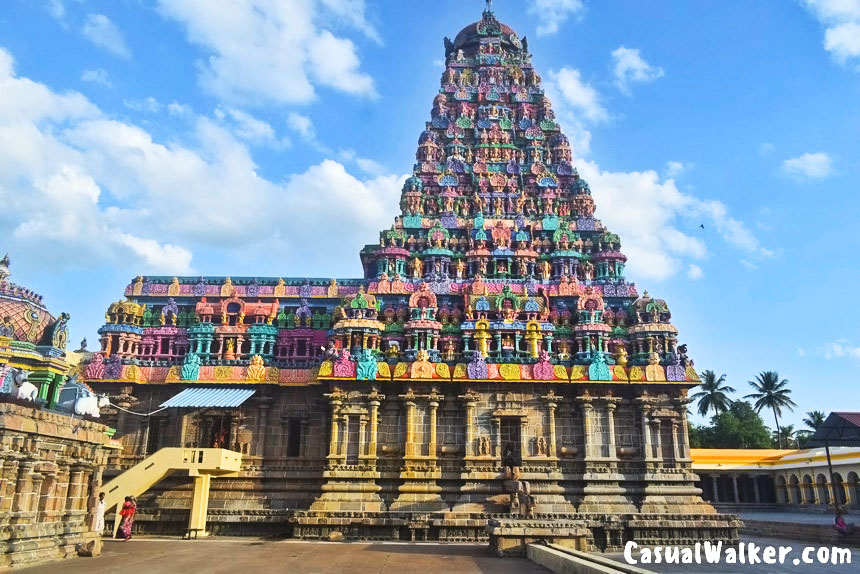
During my visit on a Sunday during Rahu Kalam (the inauspicious time period), I was amazed by the overwhelming number of devotees circumambulating the Sarabeswarar shrine. The priest told me that devotees seeking protection from enemies, court cases, black magic, and family disputes find particular solace here. Many receive a blessed lemon as prasad, believed to ward off negative influences.
Aram Valartha Nayaki: The Divine Mother
The temple’s presiding goddess, Dharmasamvardhini or Aram Valartha Nayaki (She who nurtures righteousness), faces east in a standing posture. Couples seeking marital harmony and children flock to her shrine. The two Dwara Baalakais (door guardians) at her threshold seemed to welcome all with divine protection.
The temple’s reputation for neutralizing black magic and evil forces draws devotees from across South India and beyond.
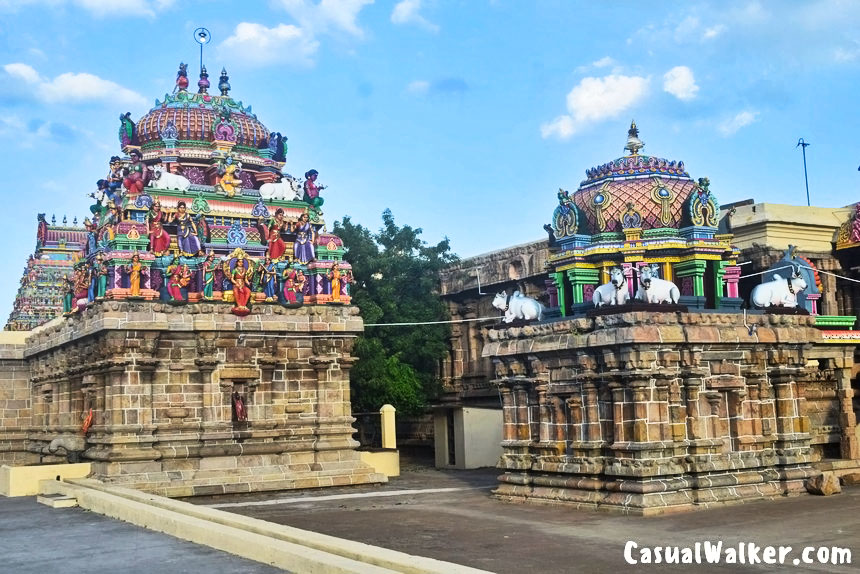
Architectural Marvels and Sacred Spaces
The temple complex houses numerous shrines including those for Vallabha Ganapathy, Natarajar with Sivagami Ambal, Subramaniyar with Valli and Devasena, and Mother Durga. The expansive complex features a large open stage for conducting sacred rituals and maintains a well-cared-for Ghoshala (cowshed).
The sacred Saraba Theertham within the temple premises is believed to cleanse ailments and negative influences. Many devotees take ritual baths here before important prayers.
Festival Experiences and Sacred Timing
The grand 18-day Brahmotsavam celebrated in Panguni (March/April). The energy during festival times is extraordinary, with the Saraba Utsava being particularly spectacular when the deity is carried in a silver chariot.
The temple considers Sundays, Fridays, Saturdays, and the eighth day of lunar fortnights as especially auspicious for worship. I noticed the Sunday Rahu Kalam prayers to Sarabeswarar drawing enormous crowds seeking divine intervention in their struggles.
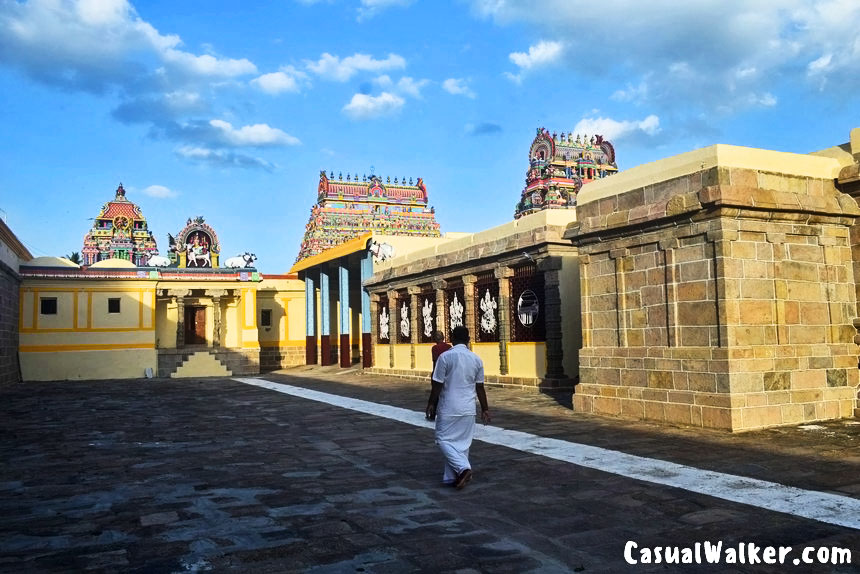
The common ritual of Sahasranama archana (chanting 1000 names), sandal abhishekam, and offering of red flowers, Vilwa leaves, and Nagalinga flowers created an atmosphere thick with devotion. The continuous Saraba Yajna performed by many devotees for 11 weeks straight spoke to their unwavering faith in the divine’s protective power.
A Temple That Transforms Lives
This temple stands as living proof that divine grace transcends time, offering healing, protection, and peace to all who approach with sincere devotion. Thirubuvanam Sarabeshwarar Temple continues to draw thousands of pilgrims annually, all seeking divine intervention for legal matters, health concerns, and life’s various obstacles.
Its unique spiritual heritage, combined with the powerful presence of Lord Sharabeshwarar, establishes it as one of Tamil Nadu’s most sought-after destinations for specific divine blessings and miraculous interventions.
Travel Tips for Sarabeswarar Temple / Kampaheswarar Temple in Thirubuvanam
Address of Sarabeswarar Temple / Kampaheswarar Temple in Thirubuvanam :
Thirubuvanam Kampaheswarar Temple, Thirubuvanam, Thiruvidaimarudur Taluk, Thanjavur District – 612 103
Phone: 0435 246 0760
Best Time to Visit: Early mornings or during festival seasons
Special Timing: Sunday Rahu Kalam for Sarabeswarar prayers
Sarabeswarar Temple / Kampaheswarar Temple in Thirubuvanam – Temple Timings:
Temple Timings & Darshan Hours
Regular Timings
- Morning: 6:00 AM – 11:00 AM
- Evening: 5:00 PM – 8:00 PM
- Closed: 11:00 AM – 5:00 PM (afternoon break)
Special Puja Timings
- Sunday Special Rahu Kala Puja: 4:30 PM – 6:30 PM
- Daily Abhishekam: Early morning hours
- Pradosha Puja: During Pradosha days (13th day of lunar fortnight)
Festival Timings
- Special arrangements during Tamil month festivals
- Extended hours during Maha Shivaratri
How to reach Sarabeswarar Temple / Kampaheswarar Temple in Thirubuvanam
By Road From Kumbakonam:
- Distance: 9 km from Kumbakonam city
- Route: Located on Mayiladuthurai-Kumbakonam road
- Travel Time: 15-20 minutes by car/taxi
- Public Transport: Direct buses numbered 1, 17, 27, 33, 46 operate regularly
From Major Cities:
- Chennai: 280 km (5-6 hours drive via NH38)
- Trichy: 85 km (2 hours drive via NH83)
- Thanjavur: 40 km (1 hour drive)
- Madurai: 200 km (4 hours drive)
By Train: Regular trains from Chennai Central, Egmore. Connecting trains from Bangalore, Coimbatore, Madurai.
Nearest Railway Stations:
Kumbakonam Railway Station – 9 km (Primary station)
- Well connected to Chennai, Trichy, Thanjavur
- Take local bus or auto-rickshaw to temple
Mayiladuthurai Junction – 25 km (Alternative)
Thanjavur Railway Station – 40 km (Major junction)
By Flight:
Trichy Airport (Tiruchirappalli) – Regular flights from Chennai, Bangalore, Mumbai, Delhi. Taxi/cab services available to temple.
Chennai International Airport – Road journey or train connection to Kumbakonam. Major international gateway.


